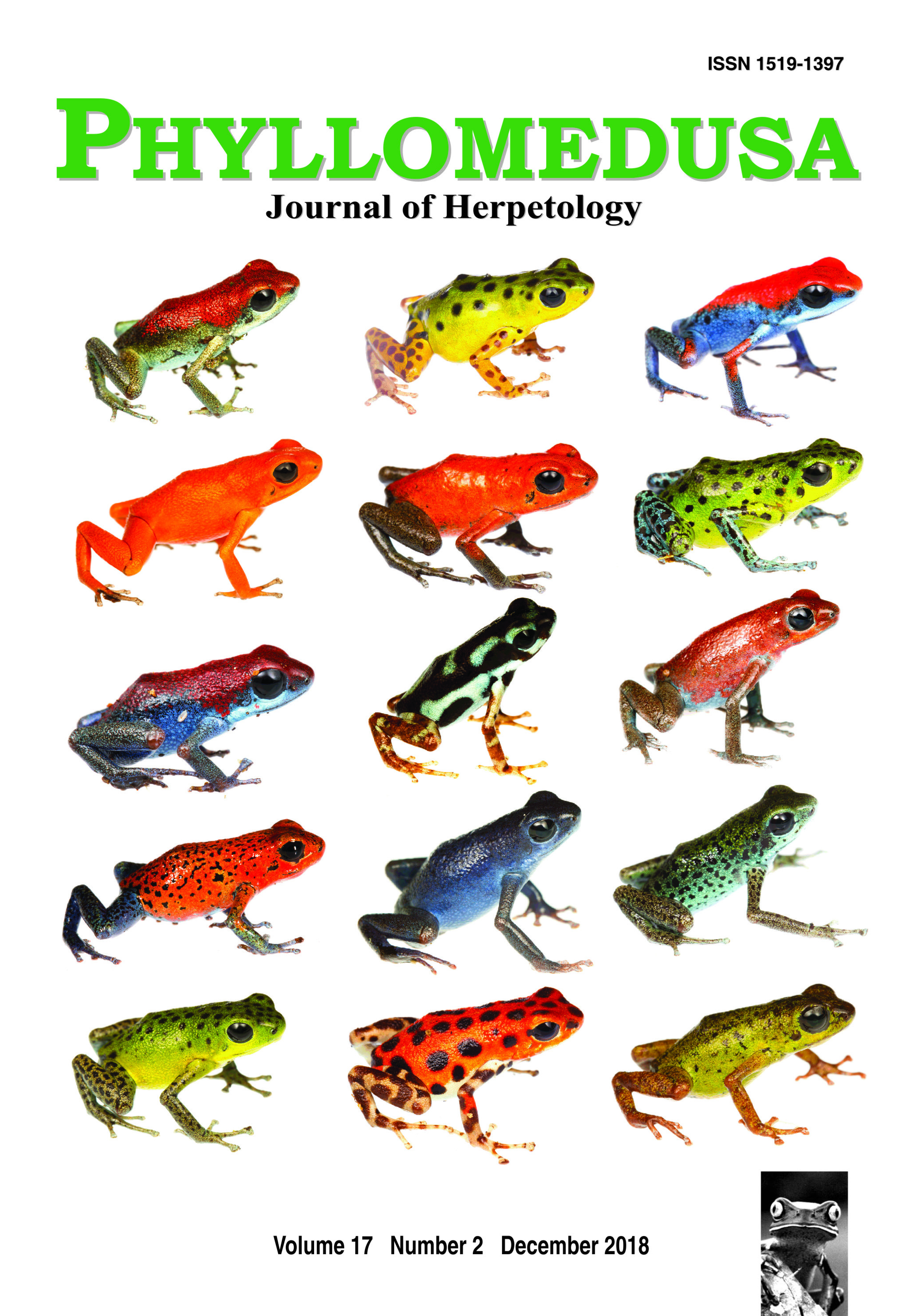Differential responses to forest edges among populations of Oophaga pumilio (Anura: Dendrobatidae) from Panama
DOI:
https://doi.org/10.11606/issn.2316-9079.v17i2p247-253Keywords:
edge effects, habitat fragmentation, population density, Strawberry Poison Frog, transectsAbstract
Differential responses to forest edges among populations of Oophaga pumilio (Anura: Dendrobatidae) from Panama. As habitat fragmentation increasingly becomes a prevalent feature in tropical systems, investigating how such novel features affect the distribution of species is of vital importance for understanding species’ ecology and conservation concerns. Species that show interpopulation variation in features that may affect their ecology (i.e., coloration) should be of high priority for elucidating the effects fragmentation may have. It is possible that these features unique to certain populations could promote or constrain the population’s ability to adapt to change. I investigated nine populations of the Strawberry Poison Frog (Oophaga pumilio) throughout the Bocas del Toro archipelago in Panama. By running transects from forest edge into interior forest, I assessed both population density and individual distance from forest edge for each population. One population was signifcantly denser than six of the other eight populations. Three populations showed increased numbers farther from forest edges while six populations showed no variation. This research highlights how reactions to habitat fragmentation may be population specifc, possibly linked to physical traits of individuals within the population. This research suggests that high interpopulation variation should be taken into account when examining species’ reactions to environmental perturbations.



 Impact Factor (JCR): 0.600
Impact Factor (JCR): 0.600 CiteScore: 1.0
CiteScore: 1.0